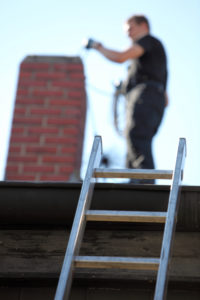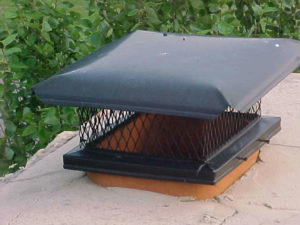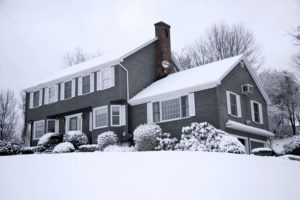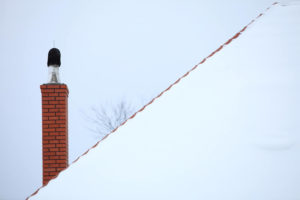COVID-19 Company Precautions
Jack Pixley Chimney Sweep and Masonry are taking a number of actions to protect the health and well-being of our customers and employees to control the spread of COVID-19.
- All of our technicians will wear a mask in your home.
- We will be practicing social distancing.
- Please notify and reschedule your appointment if anyone in the household is exhibiting symptoms, diagnosed or under quarantine due to COVID-19.
We are pleased to be able to continue to provide service during these unprecedented times. If there is anything else we can do in addition to these precautions to make you and your family feel more comfortable, please do not hesitate to let us know!
We appreciate your support,
The Jack Pixley Team
“How much does it cost to have my chimney swept?”
 One of the most common questions we are asked by our customers is how much a chimney sweeping costs. This question often accompanies a comparison of our prices to another company.
One of the most common questions we are asked by our customers is how much a chimney sweeping costs. This question often accompanies a comparison of our prices to another company.
At Jack Pixley Sweeps, we are proud to offer our customers above average chimney services for an average price. While our prices may seem higher than some door-to-door or seasonal chimney sweeps, we have years of experience, training, education, and cutting edge technology to provide our customers excellent fireplace and chimney services.
When does my chimney need to be swept?
In general, most homes need to have their chimney swept at least once per year. The National Fire Protection Association recommends all homes have annual chimney sweepings and inspections.
For homeowners who use their fireplaces on a frequent basis, sweepings may need to be done more than once per year. An average fireplace will need to be swept once for every cord of wood that is burned. If you burn more than one cord of wood over the course of the winter, which is common for those who use a fireplace or stove as a primary heat source, the chimney may need to be swept mid-winter.
How much does a chimney sweeping cost?
The cost of a chimney sweeping depends on a number of factors including location, experience of the chimney sweep, time since maintenance was last performed, and more. The national average for a chimney sweeping is between $150 and $350.
In the metro area of Minneapolis and Saint Paul, as well as the surrounding counties, homeowners can expect to pay between $189 to $300. These prices represent the high industry standards in the area as well as the demand for fireplace and chimney services; prices for chimney sweepings in the metro area may be higher than smaller cities in Minnesota due to the training, education, equipment, and more of the chimney sweeps.
Pricing between chimney sweeps varies; the price you are quoted often reflects the longevity of the company, the education and experience of the technicians, the type of liability insurance and workman’s comp that is covered, and more. Updated equipment and new technology that reflects current industry best practices can also have an impact on pricing.
In general, higher pricing is indicative of more a well-established, well-respected chimney sweep company. Higher prices also generally reflect the reputation on the company, the amount of time that is spent on a job site, the professionalism of the technicians, and the thoroughness of the chimney sweep cleaning and inspection.
What does a chimney sweeping include?
A chimney sweeping should include both a cleaning of the fireplace and chimney along with a basic inspection. During the sweeping the chimney technician will remove any soot, ash, and creosote from the flue. The removal of any built-up creosote is especially important; creosote is extremely flammable, and accidental ignition of creosote is one of the leading causes of chimney fire.
In addition to cleaning the chimney, the technician will inspect and accessible portions of the fireplace and chimney. This visual inspection can help identify any areas of damage of deterioration – before they turn into major chimney issues. An inspection is also a helpful tool in helping the chimney technician identify the cause of fireplace performance problems such as drafting issues or weak fires.
Why Hire a Professional
While many of us love hunting around for a bargain, hiring the least expensive chimney sweep may hurt your fireplace in the long run. Extremely low prices, such as those offered by some door to door chimney sweeps, often a low level of service; you may think your chimney has been cleaned when in actuality soot, ash, and harmful creosote have been left behind.
Take the time to research a chimney sweep before hiring them to work on your home. Look for chimney sweeps who hold professional certifications, such as those by the Chimney Safety Institute of America, or are members of professional organizations such as the National Chimney Sweep Guild. A professional chimney sweep should also be able to provide you with references, reviews, and copies of their liability insurance.
The Jack Pixley Sweeps Difference
At Jack Pixley Sweeps, we are proud to offer our customers above-average services for an average price!
There are a number of things that set us apart from our competition. The first is longevity and experience; Jack Pixley Sweeps has been in business since 1977, and our technicians have experience totaling over 70 years! Next, our company has a strong focus on education and training. Our technicians are fully insured, CSIA certified, and take continuing education courses to renew their certifications every three years.
This focus on training and education extends to our customers as well! We enjoy taking the time to discuss chimney issues, repairs, and procedures with our customers. You will often find us sharing articles with customers covering topics from chimney physics to drafting problems to intrusive water issues.
The team at Jack Pixley Sweeps have worked hard to develop a strong professional reputation – and we stand behind our work! We are proud to offer our friends and neighbors in the Minneapolis/Saint Paul area high quality, customer-focused chimney services. For more information on our chimney and fireplace services or to schedule your next sweeping, contact us today!
While our chimneys may seem simple, they are actually made of a number of different components that each play an important role. One of the most important – but often ignored – parts of the chimney system is the chimney cap. Chimney caps protect the fireplace from water damage, animal entry, and debris buildup; because they cannot be seen from street level, however, many homeowners do not know when their chimney caps need to be repaired or replaced.
 What is a chimney cap?
What is a chimney cap?
A chimney cap is a metal cover that protects the top of the chimney structure as well as the top of the flue. Made of out metal, chimney caps have a solid hood with wire or mesh sides; this allows smoke and gasses to safely draft out of the fireplace while preventing animals, debris, and water from getting in.
The price range for chimney caps varies by the quality and materials; a new chimney cap can range anywhere from $50 to $1500 dollars. Differences in chimney caps include double flue caps, heavy meshed bolted down caps, small venting caps, chase pan covers, and top-mounted dampers. Other pricing differences include access to the roofline, extra visits needed for measurements or installation, or the need of additional access equipment.
Choosing the right chimney cap
There is not one “standard” chimney cap. There are a variety of chimney caps – including custom chimney caps designed specifically for your unique chimney size and shape. Most homes still have their original, factory-built chimney cap. While effective, they can rust and deteriorate over time.
At Jack Pixley Sweeps, we install a variety of chimney caps; this includes small furnace flue caps, standard metal rain covers and screencaps, top-mounted dampers, and large chase pan caps that are found on manufactured fireplaces.
The type of chimney cap your home requires depends on a number of factors including the type of fireplace, fuel source, size of the chimney, and age of the fireplace system. We often recommend stainless steel chimney caps to our customers; stainless steel prevents future rusting and can be attached securely to prevent movement in severe weather.
Likewise, stainless steel chimney caps are also durable enough to prevent animal entry. Raccoons are notorious at clawing, biting, and scratching at chimney caps to create gaps in the mesh; once they have damaged the chimney cap, raccoons can access the chimney and build a nest for their young in the flue.
Consider switching to a top-mounted damper!
While we recommend that every chimney has a chimney cap, there is another option: a top-mounted damper. Top-mounted dampers replace the traditional throat dampers that most fireplaces have while also replacing the need for a chimney cap.
Top-mounted dampers are located at the top of the chimney structure in place of a traditional chimney cap. When closed, the entire chimney and flue is sealed from outside air; this prevents outside air – as well as animals and debris – from entering the chimney. When the fireplace is in use, the damper can be easily opened to allow smoke and gasses to safely draft out of the chimney.
Top-mounted dampers are considered an energy-efficient chimney upgrade. While installing a top-mounted damper does not make a fireplace itself more efficient, it can help lower heating and cooling costs for your home. Because the entire flue is closed from outside air, the air temperature in the flue is not affected by the air temperature outside. This helps keep the rooms surrounding the flue at a more consistent temperature, reducing the utility costs associated with heating and cooling the home.
Why do I need a chimney cap?
Chimney caps serve an important purpose; every chimney needs one! Whether you choose a standard chimney cap, have one custom-designed for your specific chimney, or opt to install a top-mounted damper, the following are three of the major reasons all chimneys need a chimney cap.
- Keep out animals. Animals love chimneys! Birds, squirrels, raccoons, and other animals view chimneys as a safe and protected space to build nests, birth young, and hide from predators. Unfortunately, an uncapped chimney – or a chimney with a damaged chimney cap – is an open invitation for animals to nest in your flue. Animals in the flue can cause damage to the chimney system, create blockages that prevent proper drafting, increase the risk of chimney fire due to dried nesting materials, or even expose members occupants of the house to insects or disease.
- Prevent debris from blocking the chimney. Without a chimney cap, chimneys can be prone to blockages from leaves and twigs; even stray balls, frisbees, or blowing plastic bags can fall into an uncapped chimney! This debris can then cause chimney blockages; a blockage can prevent smoke and gas from drafting properly, keep fires from burning as the chimney cannot draw in outside air, or cause smoke to back up into the room.
- Prevent water damage. The exterior of the chimney is designed to withstand the elements; internal chimney components are designed to withstand heat. If the chimney cap is missing or damaged, water can severely damage interior fireplace components. Cracks to the flue liner, rust on the damper, or water in the firebox can all indicate a leaky chimney. Likewise, water in the cold, dark flue can lead to mold or mildew growth if the source of the leak is not repaired.
A well-fitted, well-constructed chimney cap can help keep your fireplace system in good condition for years to come. For more information on the importance of the chimney cap or to have your chimney cap inspected contact Jack Pixley Sweeps today!
Severe winter weather can cause significant damage to your home; some estimates find that winter storms cause more than $1 billion in damage each year. To avoid costly repairs this winter, help prepare your home for winter weather with these five tips.
 1. Inspect your fireplace
1. Inspect your fireplace
Whether you have a fireplace as a primary heat source or use one to supplement the furnace on cold days, regular chimney maintenance is extremely important. A fireplace sweeping and inspection can keep your fireplace burning safely and efficiently all winter long.
During a fireplace sweeping, the chimney sweep will remove soot, ash, and flammable creosote from the flue. In addition to preventing chimney blockages and allowing the chimney to draft effectively, removing creosote is extremely important in preventing chimney fires. Because it is so flammable, creosote buildup in the flue can be accidentally ignited by stray sparks or embers from the fireplace; removing creosote through annual chimney sweepings can reduce the risk of a chimney fire occurring.
As part of the chimney inspection, the chimney sweep will assess all interior and exterior portions of the chimney. This allows them to check for signs of damage or deterioration, such as:
- Damage to or missing chimney cap
- Signs of animal entry
- Tree limbs or branches overhanging the chimney
- Cracked or crumbling chimney masonry
- Loss of watertight seal on chimney flashing
- Staining on or around the chimney
- When caught early, chimney damage can be easily repaired by a skilled chimney technician.
2. Seal leaky doors and windows
Gaps around doors and windows can allow cold air to seep into your home during winter months. In addition to creating cold pockets in your home, this forces your furnace to work harder to keep your home at a consistent temperature. According to the US Department of Energy, reducing drafts can help reduce energy costs by up to 20% during winter months.
Adding new weatherstripping is an easy way homeowners to stop conditioned air from seeping out of their home. There are a variety of weatherstripping choices available, each with their own pros and cons.
- Bronze weatherstripping. Bronze weatherstripping is extremely durable and can last for decades. However, it is pricier than other options – and can be time-consuming to install.
- Self-stick plastic weatherstripping. Extremely easy to install, self-stick plastic weatherstripping needs to be replaced often.
- Adhesive-backed EPDM. This type of weatherstripping is more durable than self-stick plastic but is easier to install than bronze. Most EPDM weatherstripping can last for up to 10 years.
- Don’t forget to seal around the exterior of doors and windows with latex caulk!
3. Keep pipes from freezing
Consistent temperatures below zero can wreak havoc on plumbing systems – especially for exterior pipes. While constantly moving water and warmer interior temperatures helps protect interior plumbing, exterior pipes are prone to cracking. In addition to releasing hundreds of gallons of water in a single day, the leaks from cracked pipes can lead to serious structural damage to a home.
Begin by shutting off external pipes at the beginning of winter. Check pipes again after a few days to ensure they have fully drained and to flush any remaining water out of the system. Consider wrapping insulating tape around any exterior pipes or pipes in basements or crawlspaces to help prevent cracks. Likewise, invest in exterior faucet covers to cover and project exterior spigots.
4. Clean the dryer vents
In winter it is too cold to dry laundry on the line or on a rack; this often leads to dryers being used more. Ensure your dryer is operating safely and efficiently by having the dryer vents cleaned.
Each year, more than 15,000 house fires are caused by clogged dryer vents. When dryer vents become clogged, dryers may stop operating efficiently, take longer than 1 cycle to dry, create excessive lint, or have lint that is visible from exterior vents.
To reduce the risk of a dryer fire, vents should be cleaned once per year. This is especially important for homes or buildings with longer dryer vents; the longer the dryer vent has to stretch, the more lint can become trapped inside.
5. Prevent ice dams
In areas of the country like Minnesota, significant snowfall is a part of life during the winter. Protect your roof from damage by helping prevent ice dams from forming. Ice dams form at the edge of the roofline and prevent melting snow from draining.
Ice dams form on the roof when warm air in the upper floors or attic melts snow or ice on parts of the roof – but not the eaves. As this snow melts prematurely, it freezes again on a colder part of the roof, such as the eaves; this creates the ice dam that can back up the flow of melting water and lead to roof damage.
There are several ways that ice dams can damage the roof. First, backed up water can sit on shingles, leaking through the roof and onto insulation and drywall. Ice dams also put downspouts and gutters at risk; because they sit at the edge of the roofline, a large ice dam can pull gutters down with it if it falls.
Ice dams can be carefully removed by breaking away small chunks at a time or using tools such as a rake or shovel to remove snow from the roof after a storm. However, the best solution to ice dams is to address the underlying cause: parts of the roof where snow melts too quickly due to leaking warm air. Adding insulation, keeping all parts of the home a consistent temperature, and preventing air leaks in the attic can all help prevent ice dams from forming.
At Jack Pixley Sweeps, we are used to dealing with cold Minnesota winters! Contact us today for information on how we can prepare your fireplace and chimney for the winter.
Winter is in full swing; for many homeowners, this means that the fireplace is being frequently used to bring warmth and comfort to their homes. However, there is still time to take care of your chimney!
With the holiday season at a close, it is easier for many families to find time to schedule chimney services. In addition, the team at Jack Pixley Sweeps have a variety of deal and promotions for our customers during these winter months!
$40 off any sweep with an inspection
If they schedule their appointment for the month of February, customers can get $40 off any sweep with an inspection. If you have not yet had your chimney swept or inspected this season, this is the perfect opportunity!
Chimney sweepings are one of the most important things homeowners can do to keep their fireplaces burning safely and efficiently. The Chimney Safety Institute of America recommends all chimneys should be swept at least once per year. Chimney sweeping removes soot, ash, and debris from the flue; sweepings also remove any flammable creosote that has built up in the flue.
Creosote, which is a natural byproduct of combustion, is highly flammable. If accidentally ignited by stray sparks or embers, this can lead to a chimney fire. While small amounts of creosote are produced by every fire, there are a number of factors that can lead to increased creosote production. Burning green wood or wood that has not been properly seasoned or purposefully burning fires at low temperatures are two things that can cause excess creosote to accumulate in the flue.
Annual Sweepings
While an annual chimney sweeping is all that is necessary for most homes, additional chimney sweepings may be recommended for homes that burn more than one cord of wood each season. Mid-winter sweeps are recommended when 1/8th of an inch of soot has accumulated in the flue; this typically occurs after one cord of wood has been burned. Homes that use a wood-burning stove or fireplace as a primary heat source are often in the most need of a mid-season sweeping.
A chimney inspection goes hand in hand with chimney sweeping. The National Fire Protection Agency, or NFPA, states that “Chimneys, fireplaces, and vents shall be inspected at least once a year for soundness, freedom from deposits, and correct clearances. Cleaning, maintenance, and repairs shall be done if necessary.”
During a chimney inspection, the chimney sweep will check all accessible areas of the fireplace and chimney for signs of damage or deterioration. Chimney inspections are an important diagnostic tool for fireplace problems. An inspection could find small cracks in the masonry of the chimney, for example. This minor issue could be identified and repaired long before the structure of the chimney itself is damaged.
No charge for insert consultations!
Thinking about changing fuel sources? Jack Pixley Sweeps is currently offering no-cost gas and wood insert consultations! Fireplace inserts are efficient, easy to use, and an excellent alternative to open-hearth fireplaces.
For many homeowners with masonry fireplaces, inserts can be installed directly into the existing hearth. This makes it easier than ever before to switch fuel sources. While there is nothing that replaces the look and feel of a real wood-burning fire, the push-button ease of a gas burning fireplace can’t be beat! Gas fireplace inserts are more realistic than ever before. They also come in a variety of sizes and styles, and with features like adjustable thermostats that offer more control.
Don’t want to switch fuel sources but want better efficiency? There are wood burning inserts, too! According to the Hearth, Patio, and Barbecue Association, installing an insert into an existing fireplace can help reduce energy bills by as much as 40%! This is because inserts operate using closed system combustion. Less heat is lost up the fireplace, so the insert can better heat the home. Likewise, inserts burn wood more completely than masonry fireplaces, reducing the amount of firewood needed.
No charge refacing consultations!
Tired of old, drab, or stained masonry? Want a fireplace that better fits your décor and style? Consider having your fireplace refaced!
During the month of January, we are offering our customers no charge consultations for fireplace refacing! Fireplace refacing involves switching out the existing fireplace front without making changes to the fireplace or chimney. Redoing the fireplace front can be as minor as installing a new mantle or new glass doors or can be as dramatic as totally replacing all the brick, tile, or stone for a totally new look.
Because every fireplace is unique, every fireplace front redo is unique as well! Homeowners can work with our teams of highly skilled masons to design a new fireplace front that will seamlessly blend in with the rest of the décor in their home – or stand out as a totally unique, eye-catching focal point. Our fireplace refacing ensures that your new fireplace is both functional and beautiful.
Contact us today to take advantage of our new year promotions!
We may be into the middle of winter, but there is still plenty of time to have your fireplace serviced! Take advantage of the new year promotions at Jack Pixley Sweeps and contact us today to schedule a sweeping or inspection with a discount or to set up a free insert or refacing consultation!




